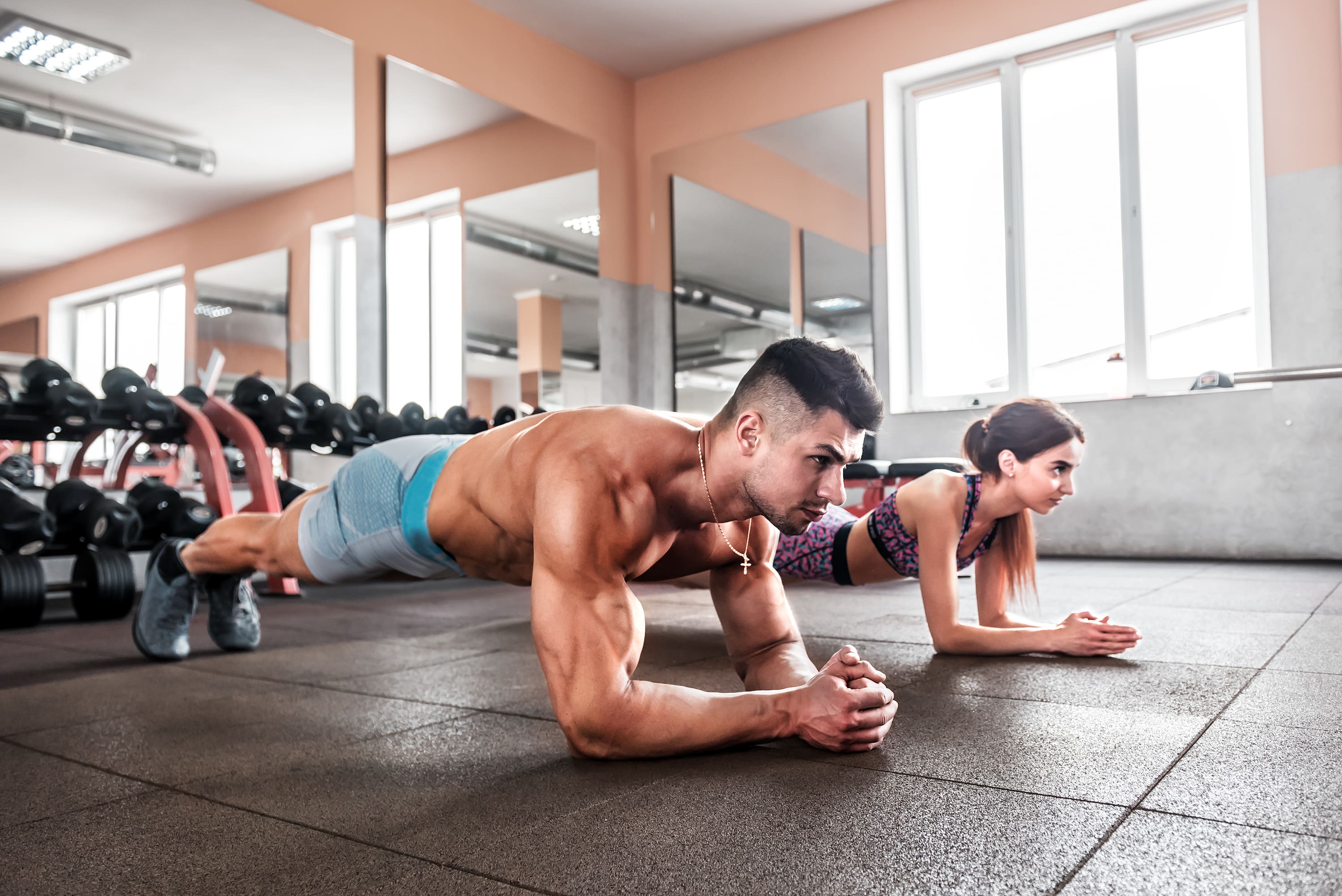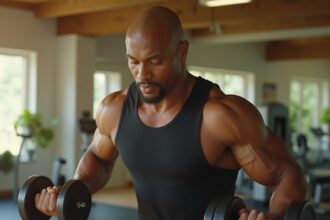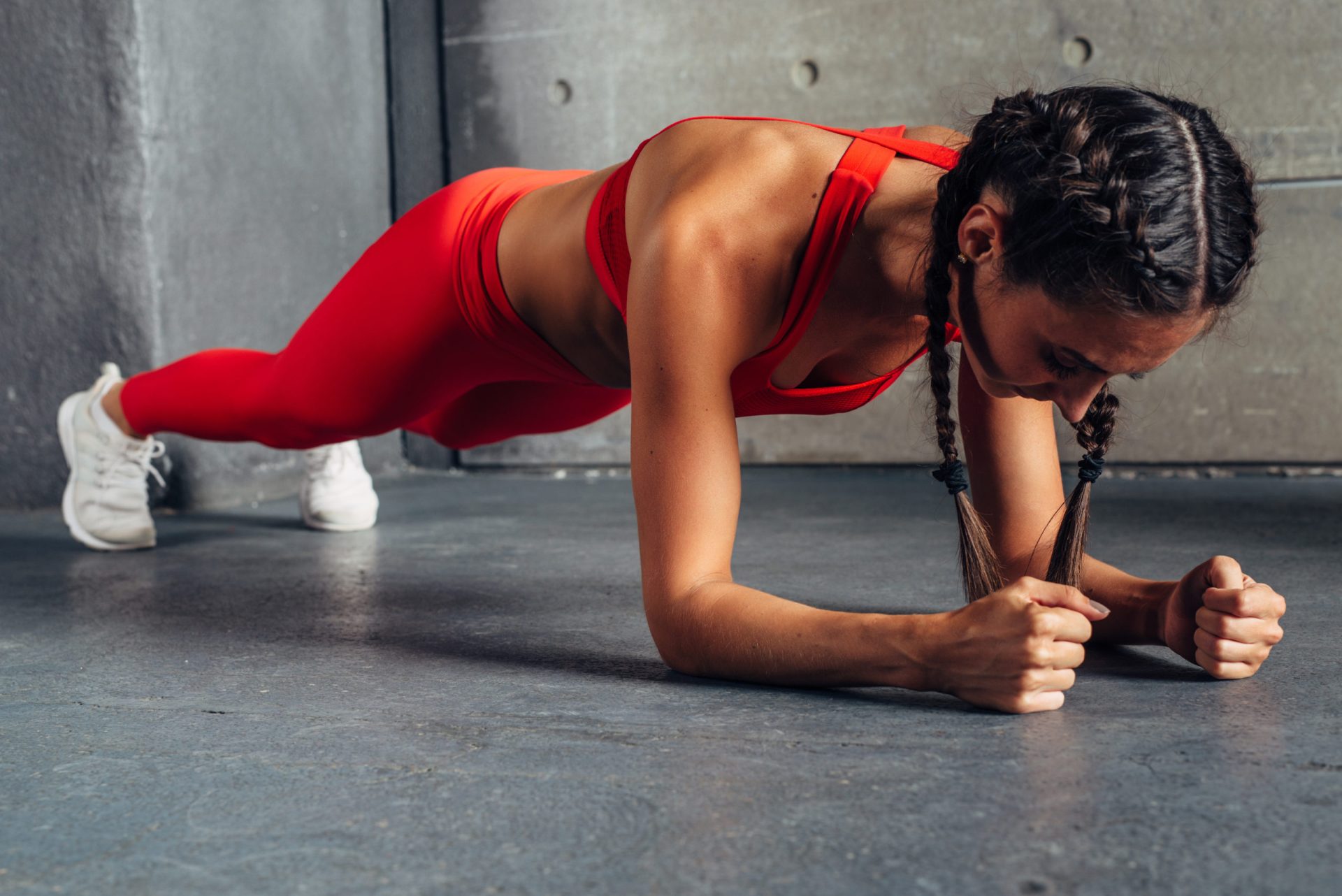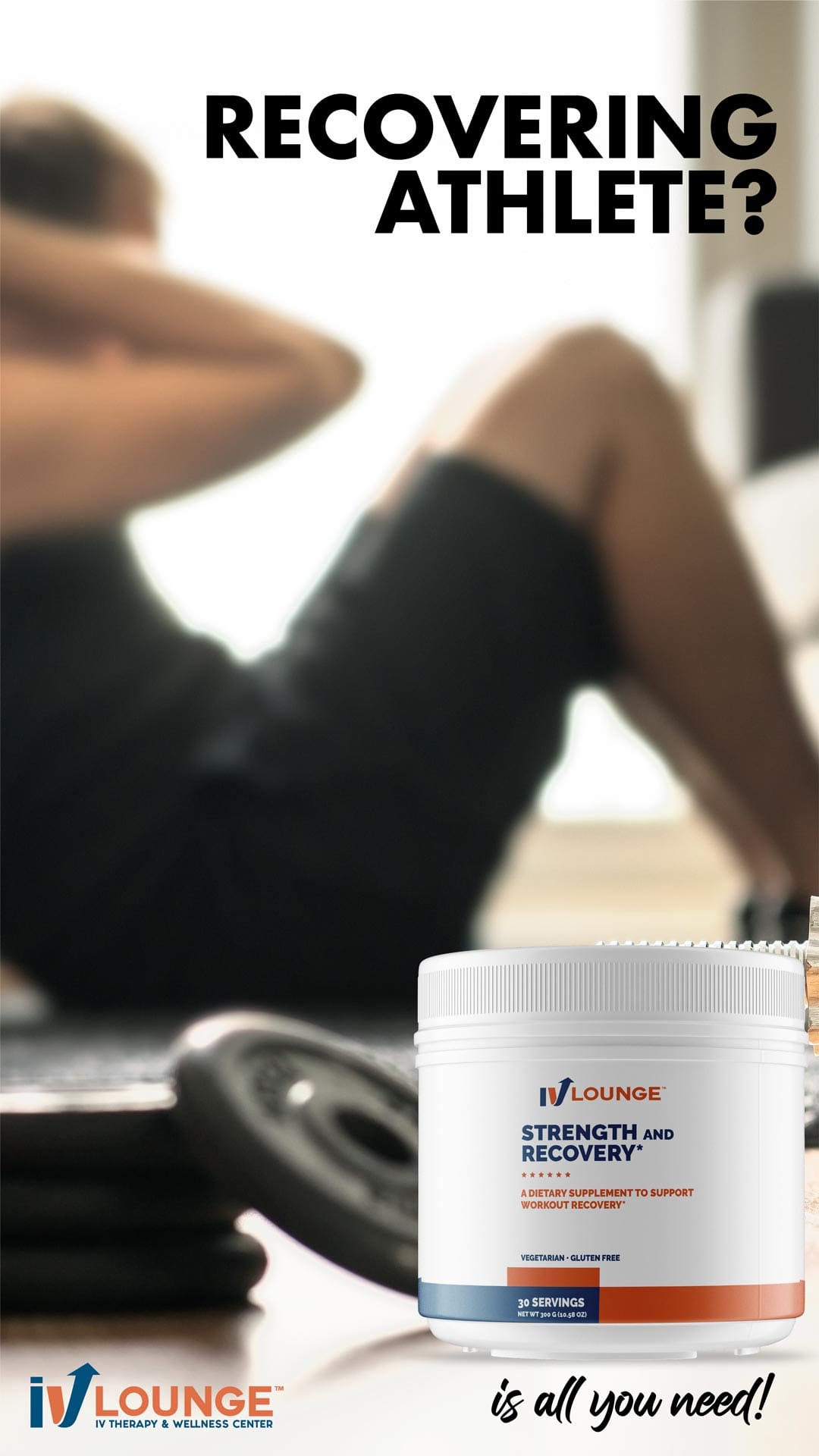By Megan Johnson McCullough
The abs, back, and core love the plank. You… maybe not so much. But there are a number of reasons why this position benefits the body. This isometric exercise supports better posture, improves balance, and even works your glutes and hamstrings. The plank is an all in one deal too good to pass up.
Correct Form
Plank form begins with the pushup position with the forearms resting on the floor. Elbows are at 90 degrees and are positioned directly under the shoulders, and the arms are parallel. Feet are in dorsiflexion. A straight line is formed from head to toe. Eyes should be looking straight forward.
While engaging the glutes, abs, and quadriceps, you raise the hips from the ground. Key areas to look out for are making sure the spine is neutral, not rounded or arched. The glutes should not be in the sky, but even with the head in a straight line. The plank is not meant to be an arm exercise, so make sure to follow these protocols to reap the benefits. It can feel this way when the shoulders are in an elevated position.
Why Plank?
Planking is great for core development. The core consists of the muscles in the midsection and increase movement effectiveness in all your limbs. The inner core muscles including the transverse abdominus and rectus abdominus (the six-pack part) are challenged during this stabilization. Posture is improved which means better back health. The abdomen is taught to help hold the body upright, which takes some of the responsibility off the back. Proper vertebrae and ligament alignment of the spine deters degenerative back issues and lack of mobility. Neck and shoulder pain can be diminished when slouching is replaced by sitting and standing upright.
Your core is the center of gravity in the body. Planking promotes teamwork in the body because all of your core is activated in unison to maintain the hold. It has been said to be the exercise to cure low back pain.

Many Variations
There are different variations. The plank can be performed on the knees, with one arm or leg raised, with different arm and leg taps or motions, and even with a twist from side to side. Intensity can be increased with timing. Work on holding the plank longer and longer. After time, different exercises can be incorporated into planking including renegade rows and dumbbell exercises using the arms in the stabilizing position.
Super Versatile
This “simple” bodyweight exercise can be done anywhere. There are very few other core exercises that can do what planking does for the body. And let’s face it, they really don’t take that much time to do. Just about anyone can do a plank, that is except if you are pregnant. Planking is not recommended after the first trimester.
Core power means more power all over the body. So plank and hold it, hold it. The plank pretty much eliminates all excuses. It is a time efficient, greatly beneficial, and convenient exercise. So get to planking!







